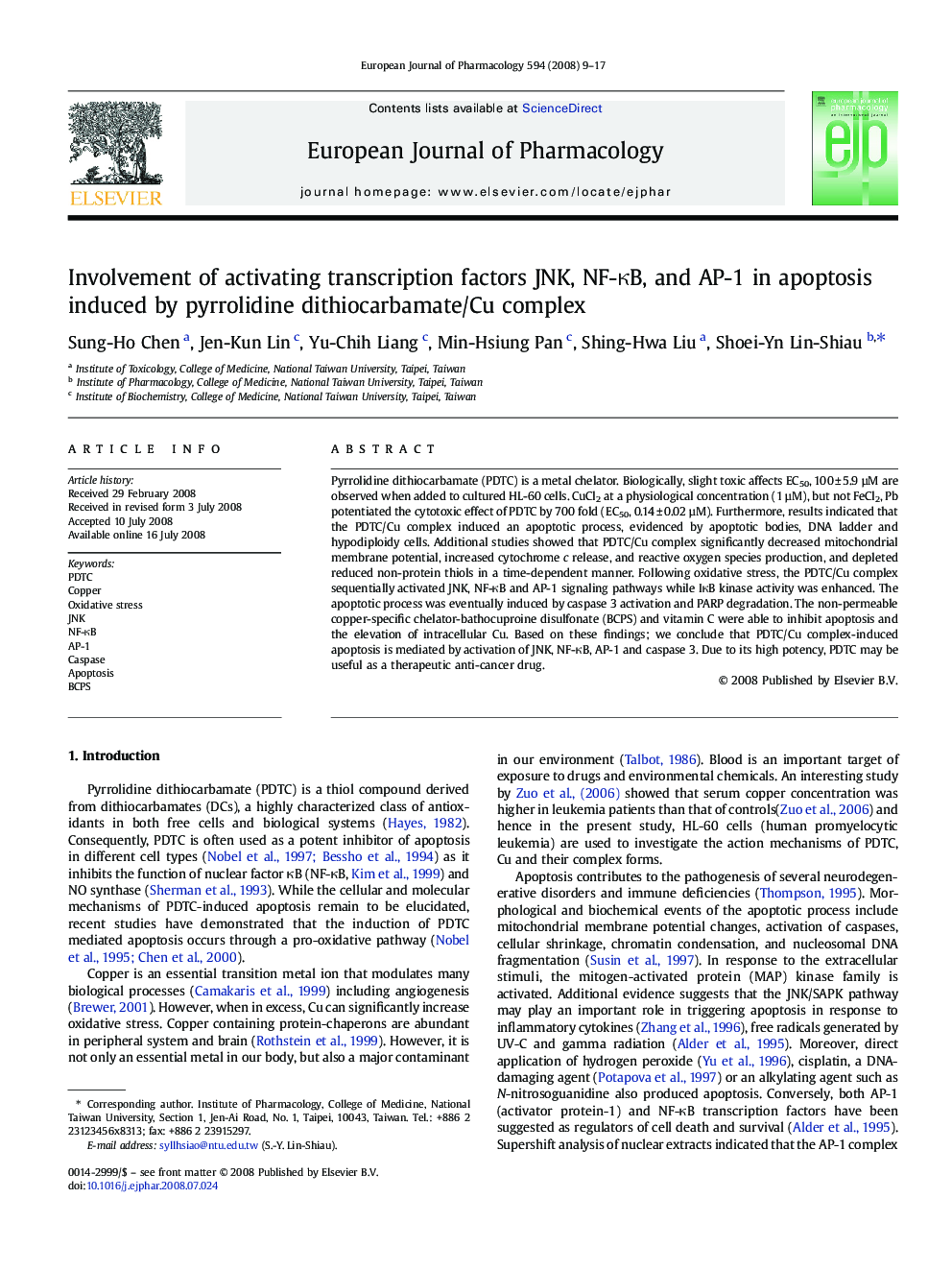| Article ID | Journal | Published Year | Pages | File Type |
|---|---|---|---|---|
| 2534891 | European Journal of Pharmacology | 2008 | 9 Pages |
Pyrrolidine dithiocarbamate (PDTC) is a metal chelator. Biologically, slight toxic affects EC50, 100 ± 5.9 µM are observed when added to cultured HL-60 cells. CuCl2 at a physiological concentration (1 µM), but not FeCl2, Pb potentiated the cytotoxic effect of PDTC by 700 fold (EC50, 0.14 ± 0.02 µM). Furthermore, results indicated that the PDTC/Cu complex induced an apoptotic process, evidenced by apoptotic bodies, DNA ladder and hypodiploidy cells. Additional studies showed that PDTC/Cu complex significantly decreased mitochondrial membrane potential, increased cytochrome c release, and reactive oxygen species production, and depleted reduced non-protein thiols in a time-dependent manner. Following oxidative stress, the PDTC/Cu complex sequentially activated JNK, NF-κB and AP-1 signaling pathways while IκB kinase activity was enhanced. The apoptotic process was eventually induced by caspase 3 activation and PARP degradation. The non-permeable copper-specific chelator-bathocuproine disulfonate (BCPS) and vitamin C were able to inhibit apoptosis and the elevation of intracellular Cu. Based on these findings; we conclude that PDTC/Cu complex-induced apoptosis is mediated by activation of JNK, NF-κB, AP-1 and caspase 3. Due to its high potency, PDTC may be useful as a therapeutic anti-cancer drug.
